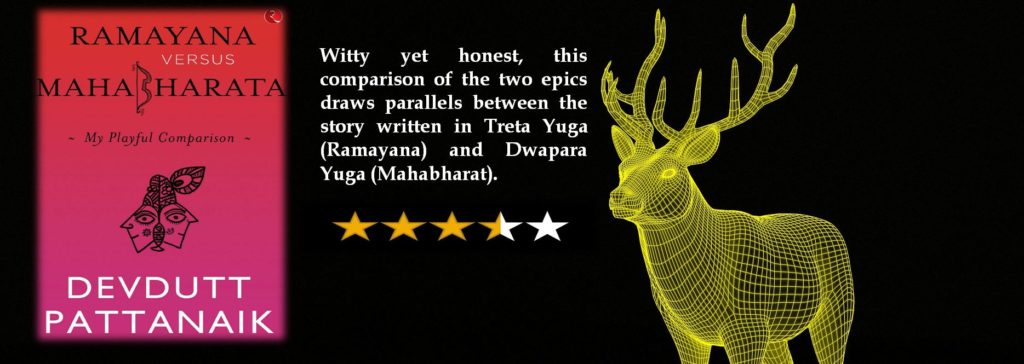Ramayana versus Mahabharata
Author: Devdutt Pattanaik
Publisher: Rupa Publishers
Rating: 3.5/5
“Fate is inevitable. But it is our actions and the perception that pave our path for success.”Much has been read and talked about the Ramayan and the Mahabharata. Much has been hypothesized. There are beliefs and there are myths. And every single version tells the story from a different point of view. When I watched Devdutt Pattanaik’s video on Rules vs Principles last year, I was in awe of the ease with which he explained the concept of Dharma and Karma. Fast forward some months- his new book- Ramayan versus Mahabharat-lands in my house. Witty yet honest, this comparison of the two epics draws parallels between the story written in Treta Yuga (Ramayana) and Dwapara Yuga (Mahabharat).
Dividing the stories into different phases, the author brings out the similarities and the differences in the execution of the two plots. It is true that Ramayana was based more on empathy and Mahabharat was based more on exploitation. In other sense, Rules and Principles formed a vital part of existence for the heroes in Ramayana, while Rules formed a vital part of the existence in Mahabharat. Mr Devdutt once explained in one of his business sutras about how an organization, when new, is all about the ethics, principles and rules. With time, the same organization fails to imbibe ethics and spirit of service in its employees. However, rules still remain the same. Similarly, Ramayana was about Rama, an epitome of an idealist. He was born in a yuga where the moral code or Dharma was upheld at the cost of oneself. Krishna, on the other hand, was born in a yuga when morality saw a decline. For him, Karma was foremost. Not to forget that Krishna’s Dwapar yuga preceded Rama’s Treta Yuga.
The author also draws parallels between astute maternal uncles, wily kings (Ravana and Duryodhana) and faithful wives. Right from the setting to the reason of dispute, it is very interesting to relive the two epics simultaneously and understand with a deeper insight.
Joining the dots together, the book aims to bring the mythological lineages in the light. With simple yet impactful vocabulary, the book doesn’t fail to impress. The subtle red cover is soothing. Collecting information about the epics is an arduous task and the author’s efforts deserve appreciation
Flawless narrative and lucid language acted as a cheery on the cake for me. Though I am fond of challenging vocabulary, the same does not work well for me when I am reading mythology. Overall, the book is definitely interesting and is a treasure chest of information. For the ones who are already masters of the two epics, the reiteration of the stories might seem boring.
Best wishes to the author!
Buying link: Amazon

